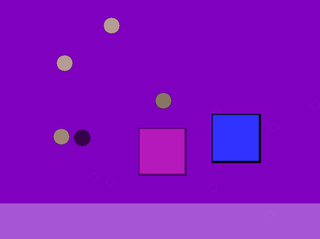Simulation versus Narrative: Introduction to Ludology (2003)
This work expands on concepts of narratology and ludology as modes for framing game analysis. These concepts were established initially by Frasca in his 1999 text Ludology meets Narratology: Similitude and differences between video games and narrative. [5] He defines ludology as the play-oriented aspects of games, such as mechanics and control schemes. Narrative aspects provide a context for the play-oriented features within the gamespace. As noted in the text's introductory paragraphs, Frasca's writing on ludology was spurred by a desire to address the inadequacies of games studies literature. [6] He states that games studies literature of the late 1990s and early 2000s involved the framing of game analysis within dramatic and narrative frameworks. This could include the framing of games within understandings of film and written literature. There was no existing model to consider games on their own terms (namely play and interactivity); a significant limitation in academically engaging with the medium. Interactivity is an intrinsic facet of the medium, however, no formal academic discipline existed which could address it. Through the proposition of a ludic framework, Frasca aims to encourage analysts to consider how play elements interact and convey meaning. This model of game analysis works similarly to Espen Aarseth's theoretical framework of digital textual analysis involving the reading of texts as cybernetic systems.
Simulation versus representation
Frasca distinguishes between simulational and representational media, with videogames being part of the former and 'traditional' media being the latter. The key difference, he argues, is that simulations react to certain stimuli, such as configurative input data (button presses etc.), according to a set of conditions. Generally, representational media (he provides the example of a photograph) produce a fixed description of traits and sequences of events (narrative), and cannot be manipulated. He places emphasis on the importance of serious games, most notably the use of games for political purposes. Unlike traditional modes of storytelling, simulation is not binary by nature. According to Frasca, this has benefits when applied to the political propaganda simulation.
Simulation output is also discussed, with Frasca drawing attention to the argument that the sequence of signs produced by the film and the simulation look exactly the same. Frasca notes that what these commentators have failed to understand is that simulation cannot be understood solely through its output; the player's direct input is a fundamental part of simulation. This is reminiscent of Aarseth's work on user engagement in games and simulations. He argues that it is insufficient to "merely observe the audiovisual output from someone else's playing...", [7] and that in order to fully understand an interactive digital text one must experience it first-hand.
Paidia and ludus
Frasca draws links to the game-type categorisations established by Roger Caillois in Man, Play and Games (1961). Specifically, he engages with concepts of ludus and paideia; that is, play and game, or the rule based structures of games. Frasca expands on Caillois' original definitions, and positions them in relation to narratology, ludology and contemporary games. According to Frasca, ludus is associated with more linear, narrative oriented with clearly defined goals and grounded in a set of rules. Paidia, while also based in a system of rules, is more abstract. Players are able to create their own goals within the game world in the style of emergent gameplay.
Drawing on his redefined concepts of padia and ludus, Frasca establishes varying levels in simulations which can be manipulated in order to convey ideology.
- Simulation shared with narrative and deals with representation and events. – For example, characteristics of objects, characters, etc. He notes that "a simple switching of character skins could turn Quake into a deathmatch between Israeli's and Palestinians...the rules of the game remain unchanged...only the characters and settings are modified. However, on an ideological level, this game completely differs from the original..." [6]
- Manipulation of game rules. – What a player can do within a particular game model. This relates directly to the concepts of paidia and emergence; modes of exploratory play. He notes the ideological differences between narratively guided actions and emergent, player-driven actions.
- Goal rules. – Aspects of gameplay which are a mandatory condition for 'winning'. This is in line with ludus' rule based structure.
- Meta rules – Modification of the game world. Open source, modding etc. Frasca uses the meta-rule simauthor as a point of contrast to the author of traditional narratives.








